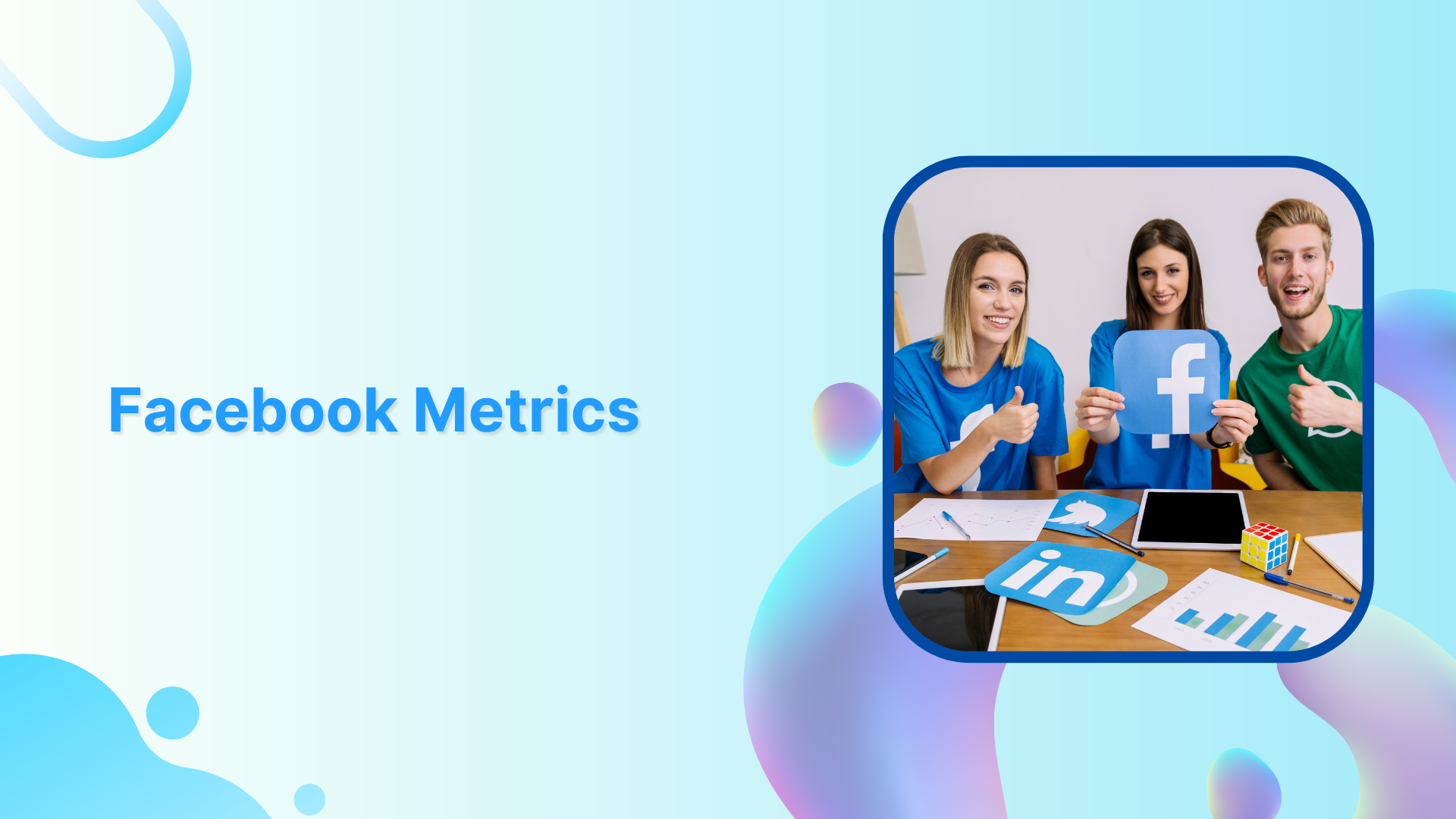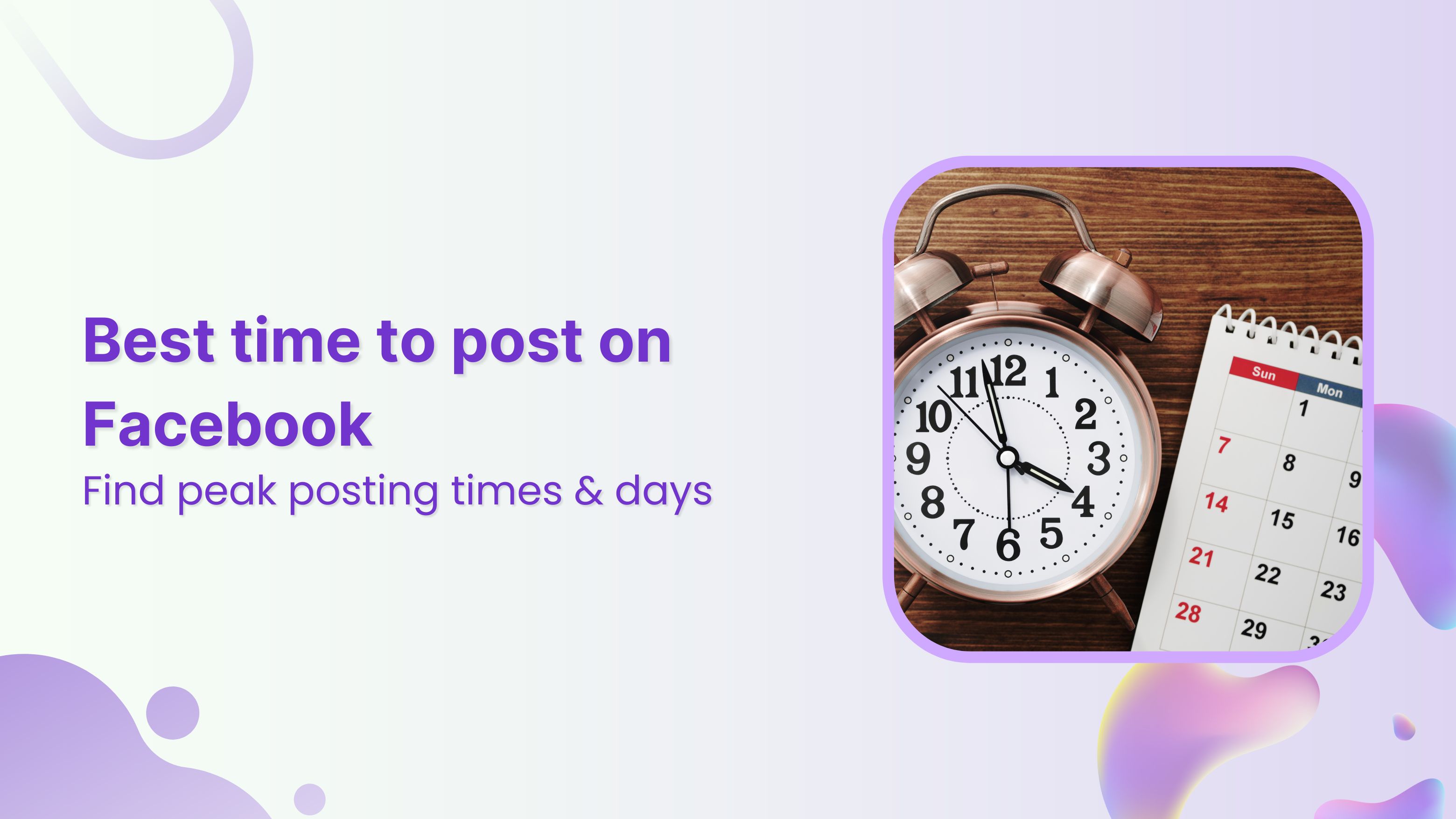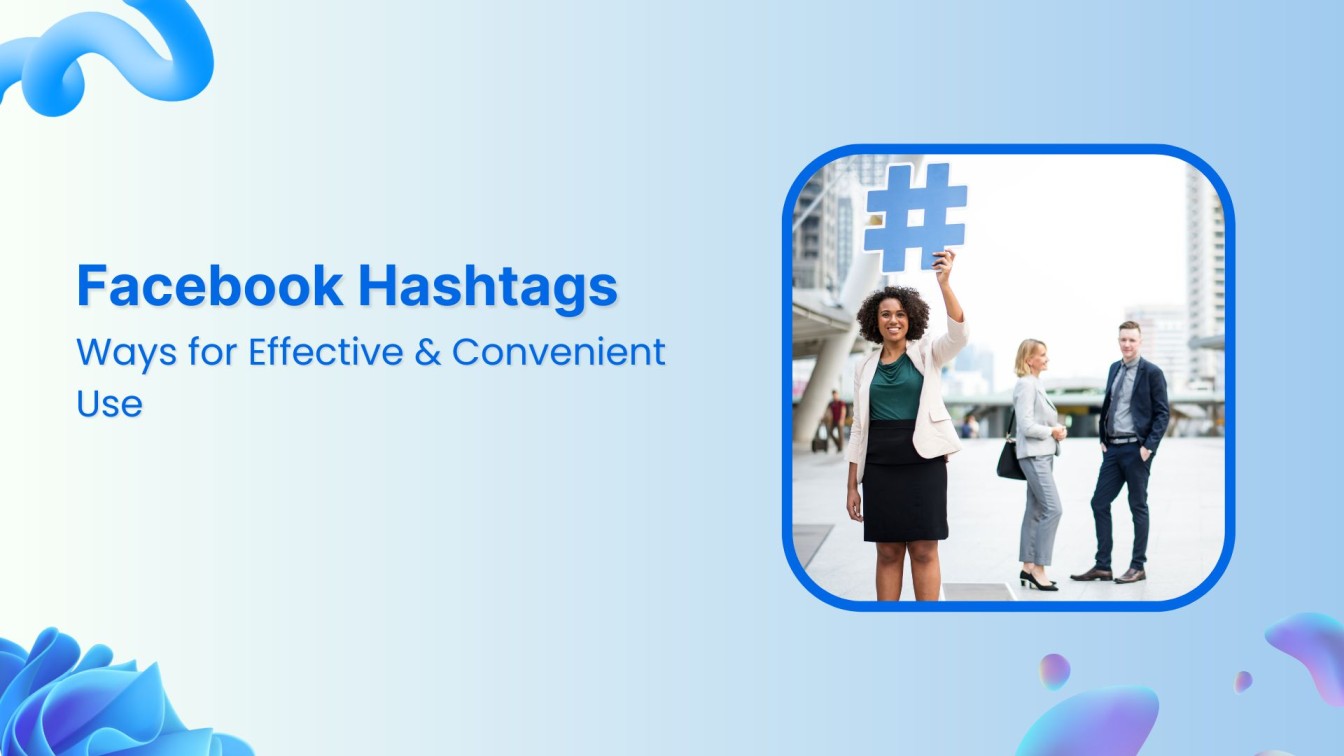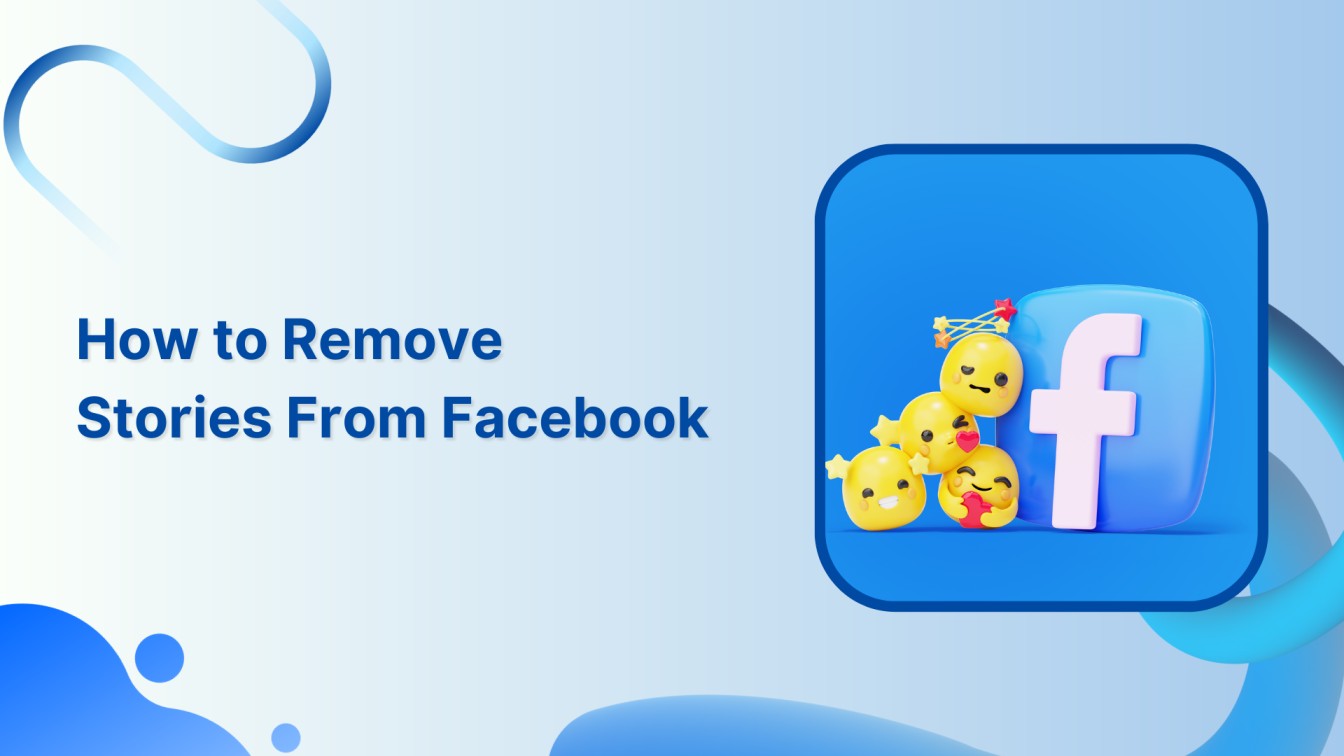Despite the backlash Facebook has faced in recent years, it stands as the largest social media site.
In fact, over 2.9 billion folks use it, making the platform a great social avenue to tap into for marketers and solo business owners looking to expand their reach and grow sales.
The best part? Facebook gives you numerous ways to connect with its audience — pages, groups, ads, and even Reels. But all efforts run the risk of going down the drain if you don’t have a solid Facebook marketing strategy that is backed by data on what is working for your business.
Facebook Marketing Manage and grow your brand on Facebook. Create, schedule, and publish posts, videos, and Reels to Facebook pages and groups.


The most important bit here: no strategy is ever going to be complete without insights from Facebook metrics. These give you a clearer picture of what you should post and when to post for maximum engagement.
Success on Facebook, therefore, relies on understanding this vital part: what are Facebook metrics and which metrics should you track? Let’s answer this and more in today’s guide.
What are Facebook metrics?
Facebook metrics are the data points that reflect how well your business is doing on the platform. They measure the ROI of a campaign or the success of a brand on Facebook.
In other words, Facebook metrics are the social media channel’s key performance indicators that tell you:
- How your overall account is performing
- Which posts are doing well
- How your audience is growing and where it’s coming from
In other words, these insights give you a detailed picture of how well your Facebook marketing strategy is working and if it is helping you reach your business goals.
Fortunately, any marketer can find Facebook metrics within the app even if they don’t have a business account. However, Facebook Insights let you in on limited measurable metrics. Thanks to third-party software though, you can collect detailed metrics that’ll show you exactly how to optimize your Facebook strategy and achieve your business objectives.
Use the data to find out when is the best time to post on Facebook and how well your Facebook marketing campaigns are resonating with your audience.
As for which metrics to track, some common metrics that marketers measure across different social media platforms include engagement, reach, clicks, and views.
When it comes to Facebook though, there are a lot more metrics to keep an eye on depending on which features of the app you’re utilizing.
For instance, brands with only a business page will have to keep tabs on their page and posts performance. On the flip side, some marketers may also have a dedicated Facebook group or a paid ad campaign that they should analyze the metrics of to improve their content plan.
Related Read: How to Grow a Facebook Group Without Spending A Dime? [A Case Study]
Why should you analyze your Facebook metrics?
If you’re a creator or marketer on Facebook, analyzing your Facebook metrics is a must for success on the social media channel. Here’s how measuring your Facebook metrics helps you grow on the platform:
- With metrics, you know which posts are performing well and why they’re performing well. In turn, this information helps you create better content.
- Facebook metrics show you which campaigns are not doing well with your audience. This way you can tell what type of posts or ads you shouldn’t create which helps you save time, effort, and money.
- Facebook metrics give you detailed insights on your followers, their demographics, and audience growth This helps you see whether you’re connecting with your target audience and if your followers are consistently increasing.
- Metrics help you get ad insights, which tell you how much revenue your business is making through Facebook and what budget you should take out for ads.
- You also learn how your competitors are doing online and where you stand in comparison through metrics.
- Finally, metrics for Facebook let you know the best times to post to receive maximum interactions.
And these are only the tip of the iceberg given tracking and analyzing your social media metrics helps you create a strong foundation for successful social business efforts.
Also Read: 12 Best Social Media Analytics Tools For Marketers
14 Facebook metrics you must track in 2024
With so many KPIs to measure, it can quickly get overwhelming to decide which metrics you must measure consistently. To make this easier for you though, we’ve got a list of 14 metrics that you shouldn’t miss if you want to be a successful Facebook marketer in 2024.
Let’s dive in:
Facebook page and post metrics
Most businesses on Facebook have a business page so these are the insights we’re going to talk about first.
Also Read: How to Grow Your Facebook Business Page Organically in 2024
Below is a look at the most important page and post metrics to track:
Engagement
Engagement refers to how people are interacting with your page and its posts. It is an overall measure of the comments, likes, shares, clicks, video views, and link clicks a page or post receives.
Related Read: Social Media Engagement: 10 Easy Ways to Improve it
Tracking your page’s and posts’ engagement is crucial to see if your target audience is interacting with you. It helps you replicate top-performing posts to create more content that is likely to resonate with your followers.
You can find Facebook engagement metrics for individual posts as well as your overall page within the social application. Simply go to Insights on your page where you can find Engagement under the Content tab.
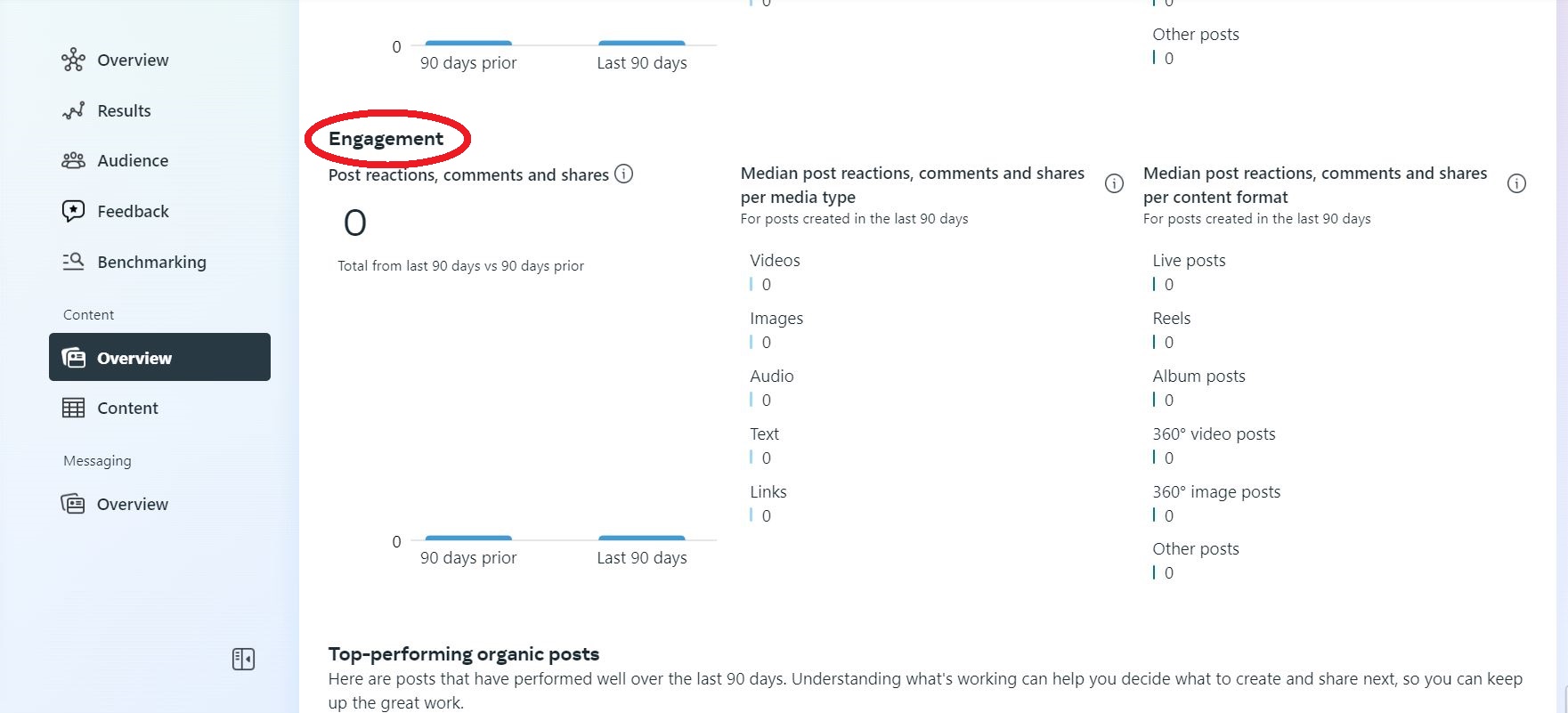


Reach
Reach determines how many people have come across your posts. This metric is essential as it shows you if your content is even reaching as many people as you’d like.
Your page’s reach covers how many unique viewers have come across your business on the application via organic as well as paid posts.
Remember: since a higher reach brings in better engagement, make sure you’re working on growing your reach at all times
To find the Reach metric, go to the Content tab. You’ll find a detailed overview of your Reach right above Engagement.
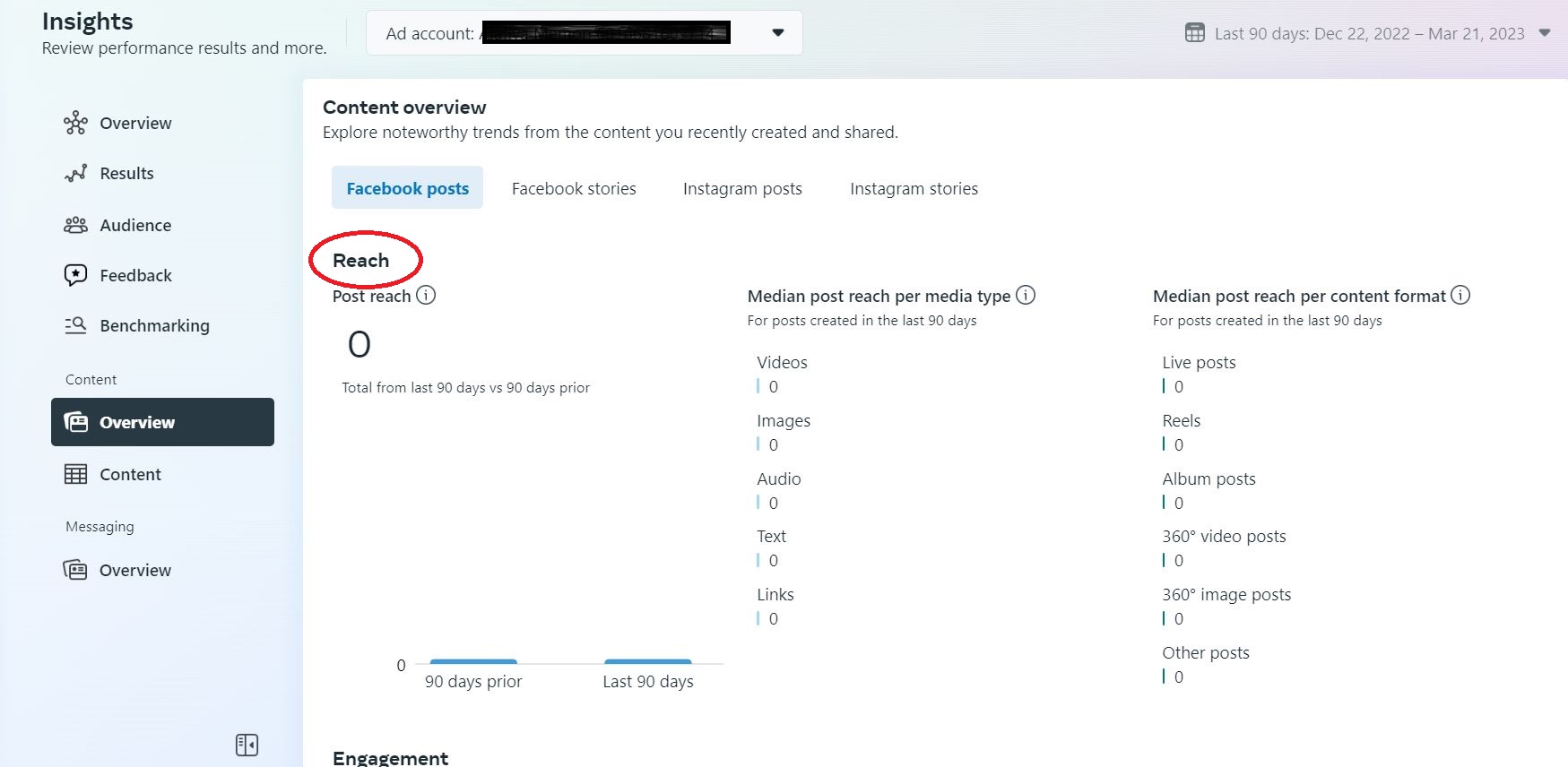


You can also go to Results to view a graph of your page reach over a period of time



Impressions
Impressions is a metric similar to Reach with a minor but noteworthy difference. Where reach covers unique viewers, impressions are the total times your post was seen. Meaning: it includes repeated views by the same user.
For instance, your post could have reached two people but had ten impressions if one of them viewed it multiple times.
The impressions metric gives you an idea of your viewers’ interest. Higher impressions indicate that a viewer may have seen your posts several times on their timeline or even visited your page to see your content again.
Now while you can’t find the impressions metric in the Meta Business Suite’s Insights, you can use a third-party app to track it.
ContentStudio is one software that can help. It is a central social media management and analysis dashboard for various social accounts (more on it below).
Note: to find these three Facebook post metrics (engagement, reach, and impressions) for individual posts, click on See insights and ads, an option given beneath each image, status, or video you share.



Facebook audience metrics
While it’s important to track Facebook engagement metrics, you must also know if you’re reaching and engaging with the right people: your target audience.
So, here are the audience metrics that you should track on Facebook to see if your followers match your buyer persona:
Follower demographics
To reiterate, tracking follower demographics tells you if you are creating content for the right audience. For instance, a local skincare brand may aim to have more female viewers who reside in the same country.
You can find insights on your audience under the Audience tab:



Here you can find a breakdown of the age and gender of the people who are seeing your posts. Scroll down to find the top countries and top cities that your audience belongs to.
Reviewing this metric helps create content better suited for your audience on Facebook.
Facebook brand awareness metrics
For marketers who share their blog posts or product links on Facebook, here’s another metric they should track:
Facebook referral traffic
You can find this metric using any third-party software such as Google Analytics or ContentStudio.
And why is it important? Because it lets you know how many people are reaching your product pages or website through the links you’re sharing on Facebook. This way, you get to learn how effective sharing links on Facebook is for your business.
Facebook group metrics
Group metrics are available to admins with a group on Facebook. Groups must have more than 50 members though for admins to access group insights.
That said, below are three important group metrics:
Top Contributors
Top contributor is a metric that shows you the members who are most active in your group. Tracking this metric tells admins which people are most invested in the group.
Tracking top contributors helps admins find which members can make worthy moderators as well as help start conversations.
Top posts
Along with top contributors, also keep an eye on your group’s top posts. These indicate what type of content your group members want to see and interact with the most.
Growth
The growth metric helps admins see how active the group is. It shows how many new members have joined the group and how many are active participants. Track this metric to see if the group is delivering the intended results.
Facebook video analytics
You can access Facebook’s in-app video analytics through Facebook Creator Studio. Measure these metrics if you post videos regularly on your business page:
Audience retention
Measuring audience retention lets you gauge how many seconds or minutes people are watching your videos.
If people are not completely watching your videos, this could be an indication that your video content is either too long or not interesting enough. Low audience retention also hints at whether your videos have a strong hook.
Put simply, tracking audience retention is key to determining if and where you need to make changes in the videos you are posting.
How people are watching
Facebook also gives you an overview of how people are watching your videos within the app. It divides Facebook sources into three categories: Recommendations, Followers, and Shares.
Tracking this metric helps you see if people are interested in your videos enough to share them if your followers are seeing your posts, and if the Facebook algorithm is pushing your videos into recommendations.
Facebook ads metrics
Ad metrics are gold for marketers who are running ad campaigns on Facebook. These insights let marketers know if their ad strategy is working in their favor or requires changes.
Also Read: How To Build Facebook Marketing Strategy For Your Business
The following are four important ad metrics to measure:
1. Click-through rate or CTR
Click-through rate is the percentage of people who click on your Facebook advertisement. It is the total number of clicks divided by the number of people who saw your ad.
CTR reveals the effectiveness of your ad in attracting an audience. If this metric is on the lower side you need to work on your ad copy or the visuals of your ad.
You can find the CTR of your campaign and other relevant metrics in your Facebook Ads Manager.



2. Cost per click (CPC) and cost per mile (CPM)
Marketers aim for a high ROI when it comes to their ads. CPC and CPM are two metrics that reveal if your ad spend is worthwhile and if your ROI is high enough.
To clarify, cost per click is the cost an advertiser pays to the ad publisher for every click on the ad. On the other hand, cost per mile is the cost an advertiser pays to the ad publisher for every thousand impressions.
These two metrics are essential for advertisers on Facebook for understanding the reach of their ad and the brand awareness resulting from it.
3. Cost per action
For some Facebook ads, advertisers may choose to pay when a user takes a particular action. For instance, the CPA for an app advertisement would be the cost paid when users click on the ad to install the application.
4. Ad frequency
The ad frequency metric reveals how many times a user has come across your ad on average. This metric is an important one to measure to compare it against the CTR (and other metrics) of your ad and see if your ad needs tweaking.
For instance, if your CTR is low but the ad frequency is high, then your audience is coming across your ad multiple times and yet not clicking it. Meaning: you need to create multiple variations of your ad or make changes to it for it to be more click-worthy.
Where to find Facebook Insights?
Everyone with a business page on Facebook can access Insights to assess its performance.
Finding Facebook Insights is simple enough. Just follow these steps:
Open your Facebook profile and switch to your Business page. To do so, click on your profile icon at the top-right corner. You’ll see a drop-down menu with your page’s display icon at the top-right. Click on it.



Now your page’s dashboard will open up. Here, you can easily spot Insights.



And that’s it – click to see a variety of metrics on the performance of your page.
Top 5 Tools to Measure Facebook Metrics
Decided to invest in a third-party analytics tool for measuring Facebook metrics? Good call.
Facebook’s in-app analytics are helpful for businesses in their initial stages but as your business grows so does the need for software that can give you detailed insights and reports.
So, below are our top 5 tools that you can choose from for taking your Facebook analytics game to the next level.
1. ContentStudio Analytics



G2 rating: 4.6/5
Pricing: starting from $25/month
ContentStudio is multi-purpose software that enables you to automate scheduling and analyze your social media accounts.
Its Analytics solution lets you measure numerous Facebook metrics including audience growth, engagement analysis, and also competitor analysis. You can even use it to create and share white-label reports with your stakeholders.
Experience organized workflow with a unified social media management platform for agencies.


The best part about this application is that it arms you with everything you need for successful social media marketing. You can:
- Manage all social accounts and inboxes from one place
- Schedule posts for sticking with a consistent publishing schedule
- Get analytics for various social channels
- And even generate ideas and captions for your posts
2. Keyhole



G2 rating: 4.3/5
Pricing: starting from $79/month
Keyhole is a tool specifically for social media analytics. With it, you get profile tracking, hashtag tracking, campaign analysis, and even influencer tracking.
Related Read: How to Use Hashtags for Your Social Media Posts in 2022
This is not all as Keyhole allows for market research and complete brand and competitor monitoring as well.
3. Brand24
G2 rating: 4.6/5
Pricing: starting from $69/month
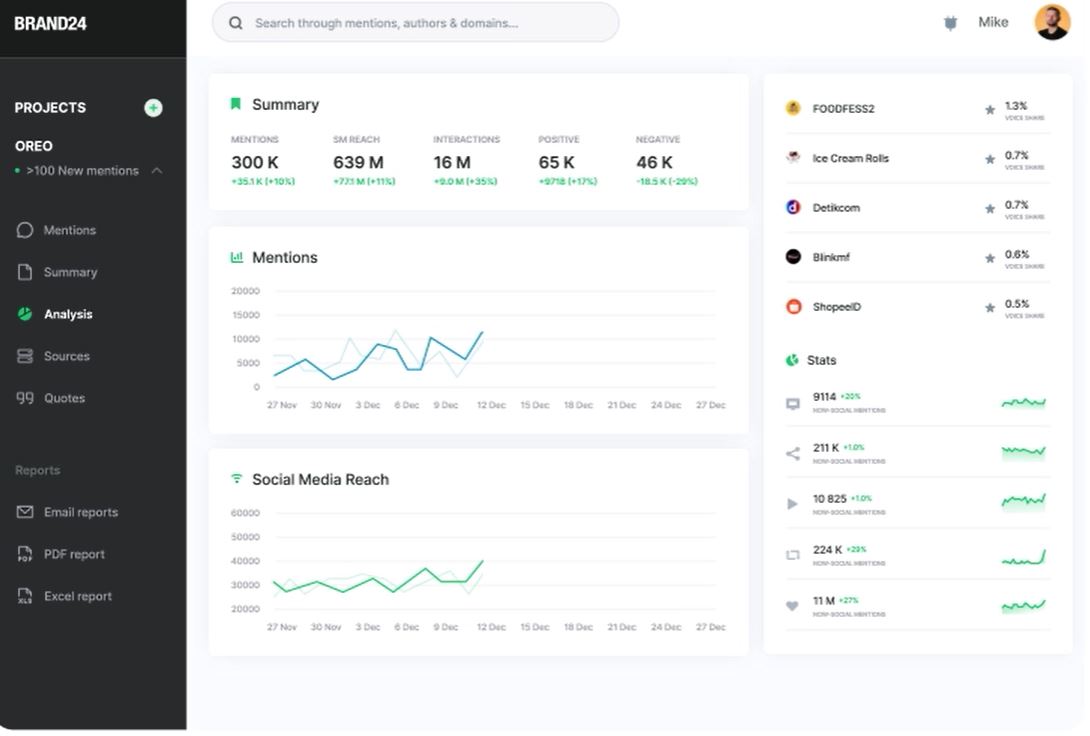


Brand24 is essentially a social listening tool that tracks positive, negative, and neutral mentions of your brand.
It tracks millions of conversations to provide insights into your brand’s social presence and also offers sentiment analysis. What’s more, with this tool you can create reports of the insights you gather using it.
Social Media Analytics Fine-tune your social media strategy for success with in-depth analytics and white-labeled reports.


4. RivalIQ
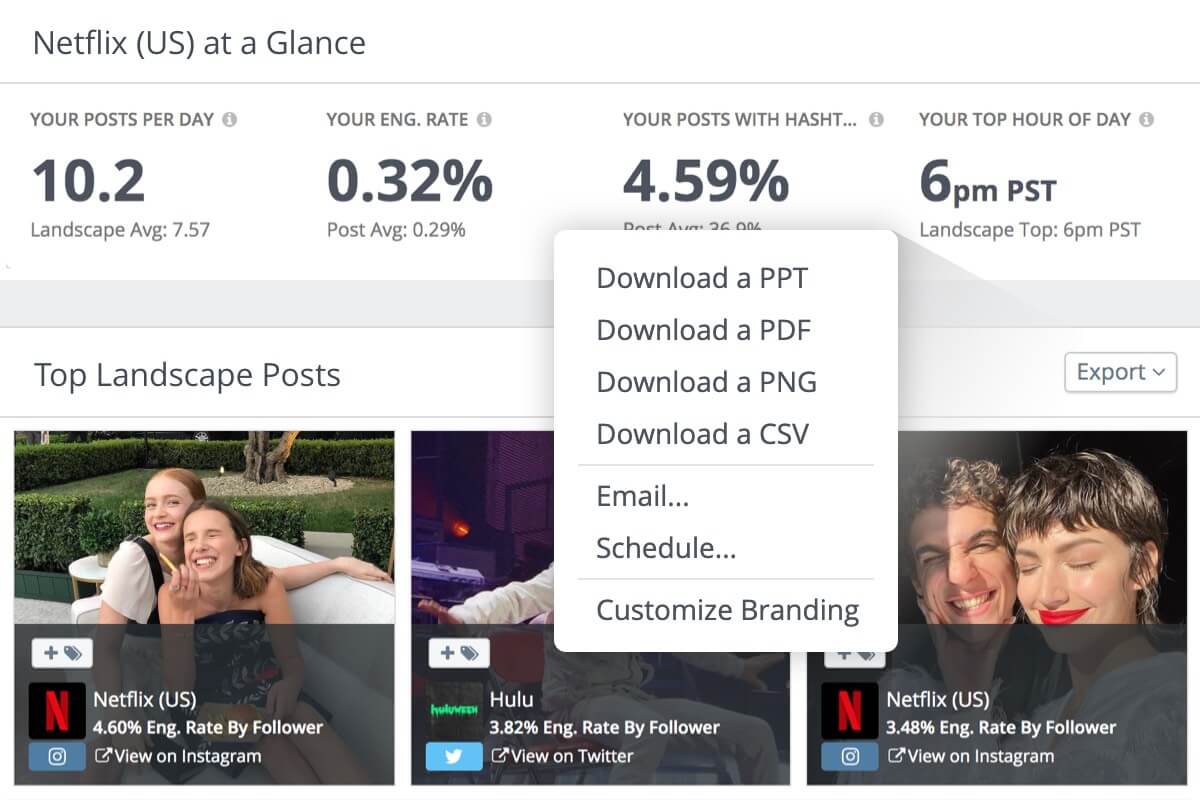


G2 rating: 4.6/5
Pricing: starting from $239/month
RivalIQ is a fully analytics-centered software for various social media channels including Facebook, YouTube, Instagram, TikTok, and more.
Plan, schedule, share, and analyze content for 15+ social media channels.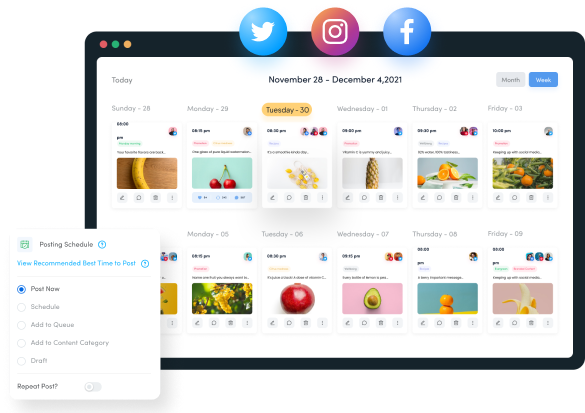


This application offers social media auditing and social reporting in addition to post, profile, hashtag, and competitor analysis. What makes RivalIQ stand out are the many free tools it has for businesses running on a budget.
5. Quintly



G2 rating: 4.7/5
Pricing: starting from $345/month
Quintly is yet another social media analytics tool that enables you to customize metrics, dashboards, and reports.
It helps you measure and compare your social growth and also lets you analyze for competitors. Additionally, Quintly tracks insights for any social media influencers or clients that you may be eyeing.
Start tracking your Facebook metrics today
Measuring metrics for Facebook is a must if you want to survive on the social media channel as a business.
But instead of overwhelming yourself by keeping tabs on a ton of Facebook metrics, track the following most important ones regularly:
- Engagement
- Reach
- Click-through rate (CTR)
- Cost per click (CPC)
- Ad frequency and
- Follower demographics
While you can find standard metrics natively using Facebook Meta Suite, you may need a third-party app for a detailed account, competitor, hashtag, and influencer metrics.
Ready to grow your business on Facebook with in-depth analytics? We recommend taking ContentStudio for a spin. It’s a highly recommended tool for getting detailed insights and customizable reports.
The best part is that it isn’t just a Facebook analytics tool. Instead, ContentStudio provides analytics for various social accounts along with other social media management features.
Sign up today to streamline your workflow.
FAQs
-
Is Facebook Analytics still available?
In 2021 Facebook discontinued Facebook Analytics to consolidate in-app business analytics features and data. So, you can still access performance metrics for your pages natively. To track metrics natively, go to Facebook Insights or Creator Studio in the Facebook Business Manager. You can also use third-party software for in-depth insights.
-
What are Facebook engagement metrics?
You can measure how well your business is doing on Facebook by tracking engagement metrics such as likes, comments, shares, views, etc. Engagement metrics help you gauge if and how your target audience is interacting with your business to see if they are interested in it. These metrics help you see which posts are performing better than others and if you need to make any changes to your content strategy.
-
What is Facebook’s most important metric?
Reach, engagement, impressions, CPC, CTR, and average watch time are some of the most important Facebook metrics. Tracking these metrics help you understand your business’s position on the social network and see if you are meeting your business goals. Analyzing Facebook metrics is a foundational step when it comes to creating quality content that converts your target audience into loyal customers.
Alafiya Memon
Alafiya Memon is a freelance content writer and an ardent lover of fries. She creates value-packed, conversational blog posts. When she's not working, you'll find her doodling or reading.

